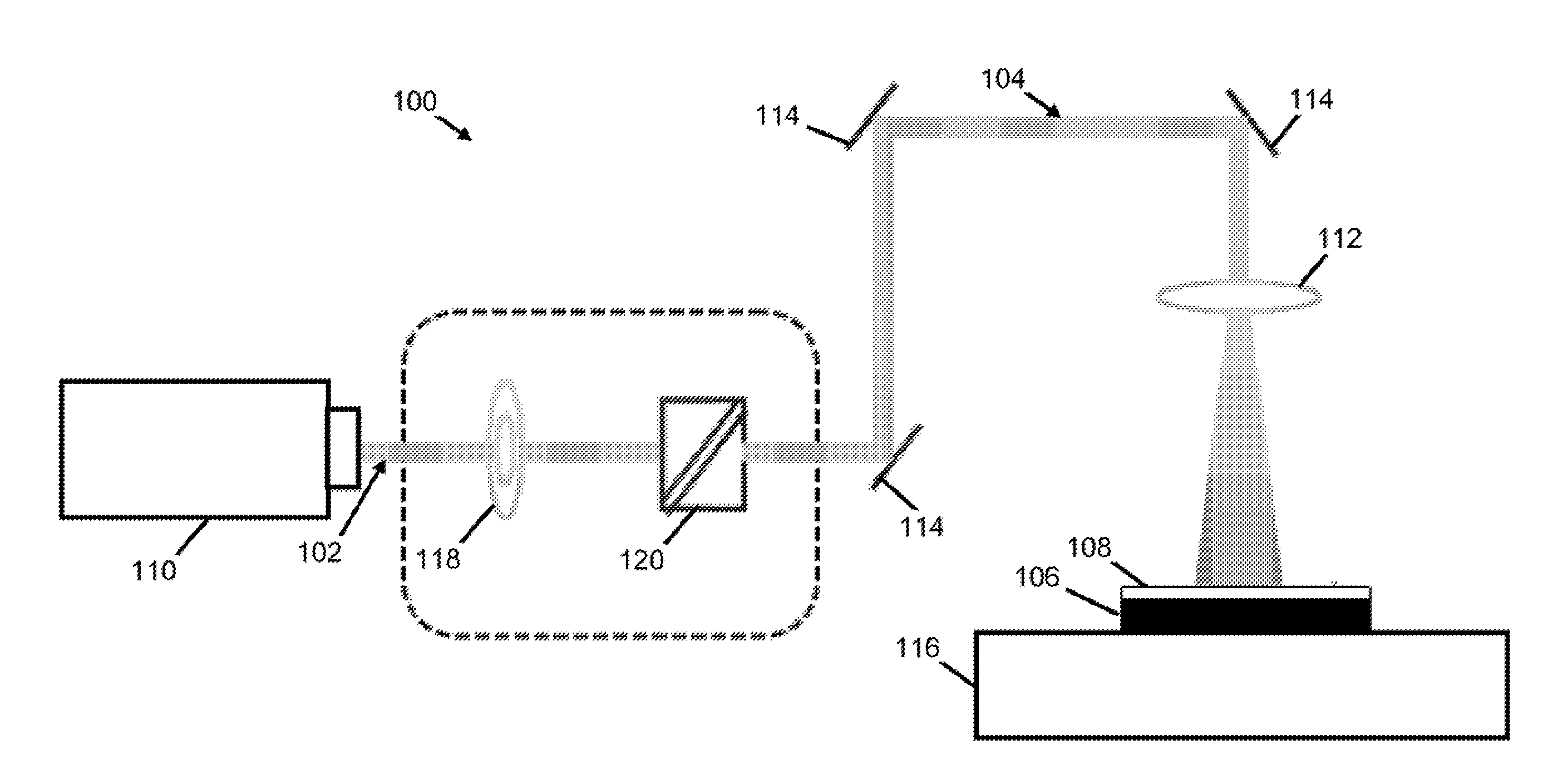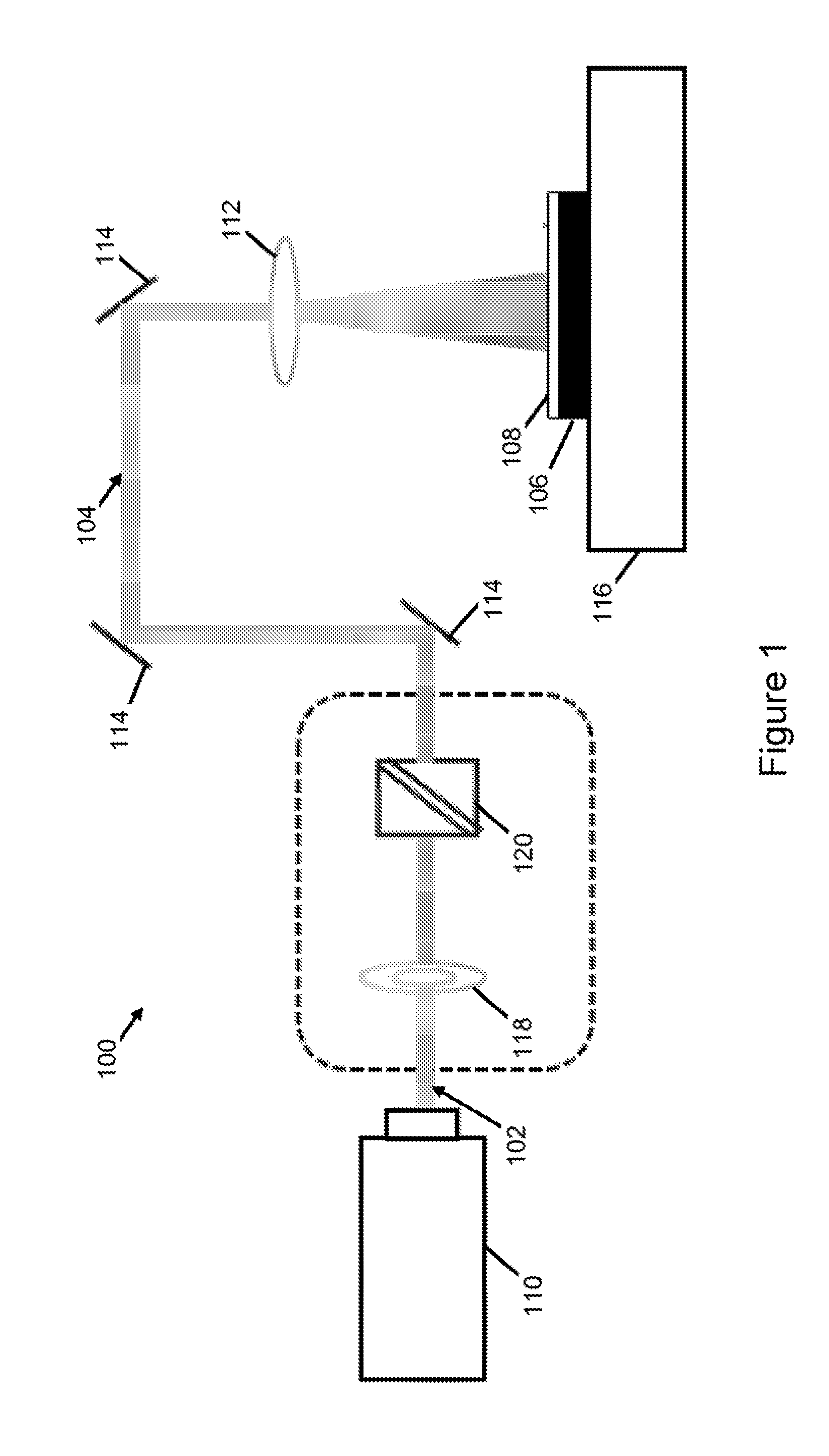High speed laser crystallization of particles of photovoltaic solar cells
a technology of photovoltaic solar cells and laser crystallization, which is applied in the direction of manufacturing tools, sustainable manufacturing/processing, and final product manufacturing, etc., can solve the problems of non-selective heating, degrade the conversion efficiency of photons and electrons, and traditional crystallization techniques used in the photovoltaic (pv) industry, etc., to achieve rapid processing, enhance the conversion efficiency of thin film photovoltaics, and reduce the cost
- Summary
- Abstract
- Description
- Claims
- Application Information
AI Technical Summary
Benefits of technology
Problems solved by technology
Method used
Image
Examples
Embodiment Construction
[0020]For the purposes of promoting an understanding of the principles of the novel technology, reference will now be made to the exemplary embodiments described herein and illustrated in the drawings and specific language will be used to describe the same. It will nevertheless be understood that no limitation of the scope of the novel technology is thereby intended, such alterations and further modifications in the illustrated devices and methods, and such further applications of the principles of the novel technology as illustrated therein being contemplated as would normally occur to one skilled in the art to which the novel technology relates.
[0021]The high speed laser crystallization (HSLC) method uses a pulsed laser to crystallize thin films under a transparent confinement layer. This can provide several benefits over traditional methods, some of these benefits can include: 1) selectivity: the wavelength of the laser can be tuned to just heat the desired materials and not affe...
PUM
| Property | Measurement | Unit |
|---|---|---|
| Pressure | aaaaa | aaaaa |
Abstract
Description
Claims
Application Information
 Login to View More
Login to View More - R&D
- Intellectual Property
- Life Sciences
- Materials
- Tech Scout
- Unparalleled Data Quality
- Higher Quality Content
- 60% Fewer Hallucinations
Browse by: Latest US Patents, China's latest patents, Technical Efficacy Thesaurus, Application Domain, Technology Topic, Popular Technical Reports.
© 2025 PatSnap. All rights reserved.Legal|Privacy policy|Modern Slavery Act Transparency Statement|Sitemap|About US| Contact US: help@patsnap.com



